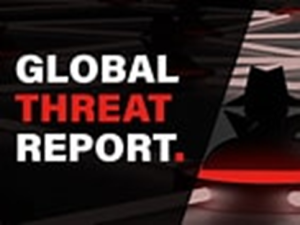
by Jerry Gordon (February 2022)
The year 2022 has started amid rising threats of war between Russia and Ukraine with President Putin massing hundreds of thousands of troops weapons and equipment demanding NATO sign an accord rejecting membership of Ukraine. US Undersecretary Wendy Sherman met with Russian Deputy Foreign and Defense Minister in what were fruitless talks. Separately, NATO Secretary General Jens Stoltenberg, who does not favor Ukraine becoming a member of NATO, met with Russian officials with no definitive outcome. There are continuing threats from China in the Indo Pacific region centered on invasion of Taiwan. Those threats enabled so-called 2+2 virtual discussions between Japanese Deputy Foreign and Defense Ministers, US Secretary of State Antony Blinken and Defense Secretary Lloyd Austin seeking to ensure protection of Japan’s Senkaku Islands expanding joint military exercises and deployment of US Naval Carrier Task Force and Marine forces, the latter on Yonaguni Island, less than 67 miles from Taiwan. Australia signed a joint AUKUS treaty with Japan. The missing piece is the establishment of a Joint Command Structure, equivalent to that NATO.
In Vienna, the US, EU-3 discussions with Iranian officials appears at a stalemate on the brink of failure before the end of January 2022. Israel and the US have spoken of a “Plan B” that potentially might involve covert efforts at stopping Iran’s race to nuclear breakout. Iran’s successful launch of a solid-fuel rocket signifying the increase in rapid mobile launch of conventional and nuclear payloads across a wide swath of the Middle East and Europe. Israel’s “war within the war” against Iran and Proxies, Hezbollah in Lebanon, and Syria, have continued under its deconfliction with Russia, despite intense bombing of Iranian weapons depots near the Syrian Port of Tartus.
Iran has succeeded in developing with Chinese componentry, cheap drones, cruise and precision guided missiles and rockets that both it and Shia militia proxies in Iraq have used to attack US forces at the Al-Sad air base. Houthi Shia rebels in Yemen continue to rain missiles on Saudi oil fields and bases, while the Biden Administration withdrew US Patriot Missile Batteries.
On January 17, 2022, Houthi rebels demonstrated the threat of Iranian made cheap drones, ballistic and cruise missiles in an attack on UAE oil facilities and a construction site at Abu Dhabi airport, 1,400 kilometers (869 miles) distant. Uzi Rubin, renowned Israeli missile defense expert called this feat, “a leap” suggesting that this was “a wake- up call for Israel.” He noted in a Jns,org report “that the Houthi drone strike on Sept. 14, 2019 Saudi oil-processing facilities at Abqaiq launched from Iran, covered a distance of only about 600 to 700 kilometers (about 370 to 435 miles)”. Reuters reported “the Houthi fired four Quds cruise missiles at an oil refinery in Musaffah district and the airport in Abu Dhabi, a Zulfiqar ballistic missile at Dubai airport and several drones at those and other sites. Three were killed and six wounded when three gas tankers exploded.” Notwithstanding, the UAE recently announced a $3.Billion acquisition of South Korean The Cheongung II M-SAM air defense system built using Russian-supplied components from the latter’s S-400 air defense system. When implemented the South Korean system would replace the aging US-supplied HAWK batteries. Because of this attack, the Biden White House indicated it is reconsidering possible reinstatement of terrorist designation for the Houthi rebels, which were lifted for humanitarian reasons.
Less than a week following the January 17,2022 devastating Houthi drone, cruise and ballistic missile attack on the UAE came another at night on January 23rd. CNBC reported that two Zulfiqar ballistic missiles were intercepted at low altitude over Abu Dhabi, with no casualties, but debris falling in areas of the capitol city of the emirate. The missiles have been downed by Patriot interceptors that have explosive heads. A UAE F-16 in retaliation took out the Houthi launcher in Al Jawf in northwestern Yemen. The Ministry Of Defense provided video footage of the successful hit. The Houthi claimed responsibility in a statement warning foreign investors that it was “unsafe’ in the UAE. The US State Department “issued an alert warning Americans to take precautionary measures”. Watch these videos of the destruction in Abu Dhabi wrought by the Houthi attack on January 17th and the downing of missiles on January 23rd where you can see falling debris.
Turkey’s rising development of larger tactical drones such the Bayraktar 2 have been used to good effect in the short Azerbaijan Armenia war in Nagorno – Karabakh, Libya and in Ethiopia. Israeli Harop loitering munitions were also battle-tested successfully in the Azerbaijan conflict.
The problem for the US, Israel, and the major powers, is that both state and non-state actors use of cheap drones equipped with explosives, precision guided rockets cannot be effectively neutralized with current countermeasures. Firing $50,000 missiles or interceptors is not cost effective to destroy these threats was evidenced by Israel’s successful Iron Dome system defense against 3,500 rockets and missiles launched by Iran-supported Hamas and Palestinian Islamic Jihad. Guardian of the Walls. On the other hand, Israel’s use of Artificial Intelligence and Drone Swarms demonstrated the ability to destroy Hamas Metro tunnels and underground weapons depots, while minimizing civilian casualties. Where, jamming and microwave systems are used against drones, they have limited range and require significant power sources. Israel’s Iron Beam laser system may offer a more cost-effective solution.
Against this background, we brought back, Dr. Stephen Bryen, a former Capitol Hill Senate Foreign Relations Senior Staffer, Reagan era Pentagon Undersecretary for technology and security, senior executive with Finmecannica USA, Asia Times columnist and Senior Fellow at the Center for Security Policy to guide us on this discussion of Global technological and geo-political threats.

Dr. Stephen Bryen
Topics discussed are:
- Cheap Drones have few cost-effective countermeasures.
- Hypersonic Missiles, Solid Fuel Rockets and Nano-technology – the surprising source of know how NASA and Harvard University
- The Impact of Turkish Drones and Israeli Loitering “suicide” munitions- Nagorno – Karabakh, Libya and Ethiopia.
- The Russia- Ukraine, US, NATO Standoff
- Russia, US Interests in Kazakhstan
- The Dangers of China’s One Road, One Belt Projects on Unwary Asian and African Countries
- China’s Threats to Invade Taiwan- Rise of US Japan and Australian Deterrent against Invasion
- New US Central Commander with good credentials but problematic White House support
- Israel’s Important Deconfliction arrangements with Russia and Plan B for Iran
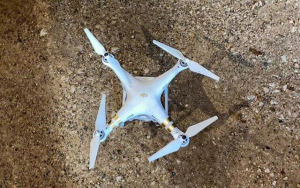
Chinese –made Hezbollah quadcopter brought down in Israel by IDF, January 4, 2022
Cheap Drones have few cost-effective countermeasures.
Jerry Gordon: Steve, I would like to start off about a subject that you and I have talked about previously – how to deal with cheap drones, whether state or non-state-actors use them. To start with, tell us about this almost comical but serious incident that involved the downing of a Hezbollah drone by Israel.
Stephen Bryen: The Israelis have not told us how they got it, or what they did do it. There is a picture of it in news stories, it looks intact. It looks like it came down, which means that it was jammed, electronically. The drone was not shot down. There are a couple of ways you can get them without breaking them up. You can jam them. The other way is to catch them in a net. The net can be dropped from a helicopter, or it can be fired from the ground and then wraps around the drone, grabbing it. However, this drone was jammed. That is how they got it.
It is a cheap Chinese quadcopter. They are commercially available. There are millions of them. When I say cheap, I mean $200 or less. It was sent to spy on Israel. Interesting thing is that it had a memory chip in it, and the memory chip had all the video that the drone was making, and the Israelis got it. What is amusing was when the Hezbollah operatives were, getting this thing ready to launch, the camera inside the drone was taking pictures of the team operating it. In the picture, you can see the operator holding the drone controller that you could buy in any hobby shop. There was nothing special about it. It just had a camera, and it had a memory card in it. The larger commercial quadcopters can be retrofitted with explosives, for example, a grenade or shell sent over, trying to kill people with it. We have seen that coming out of Gaza. We have seen that coming out of Syria aimed at the Russians, and we have also seen it in Iraq attacking US troops.
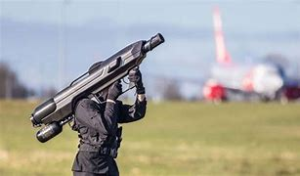
Handheld Jammer for Small Drones
Jerry Gordon: So, what are the options or effective countermeasures? You just mentioned jamming, but jamming also has its side effects, so what else is out there?
Stephen Bryen: Jamming is effective. Most drones operate about 2.4 gigahertz, which is the same band as your cell phone operates, which is common. Drones even work on Wi-Fi but jamming those things or jamming the GPS are options that are good ones. They are non-kinetic, you are not blowing it up, you are just jamming it. That comes in different forms. There is jamming and control where you can jam it and/or take over the control of the quadcopter and manage it, which is not a bad idea if you can do it, or you can just simply lose command and control and it falls out of the sky.
The only problem losing control is that if you do it over your own territory if you are trying to defend an air or an army base is it can fall on your position with an explosive, it can still do damage. There is a downside to just jamming, and you must keep that in mind. It also applies even when you shoot it down. If you do not completely kill it, it might still explode and cause damage.
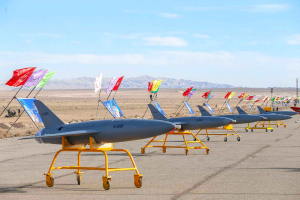
Iranian drones
Jerry Gordon: We had drones that originated out of Iran that were used against US forces in bases in Syria.
Stephen Bryen: That’s right. Also, in Iraq too. Those are larger drones so-called suicide or kamikaze drones as we call them. Not loitering munitions exactly, because they do not hover over a site, they just send them direct to the target. Yes, they can have a sizable explosive package hung on them. These drones are usually made in Iran, except for the engines and the electronics which are made in China. They usually use a single cylinder or a two-cylinder engine. These Chinese engines cost anywhere from $400 to $1,000 which is still cheap, from a weapons point of view. Electronics are dirt cheap, and they put a camera and explosive package in them and off they go.
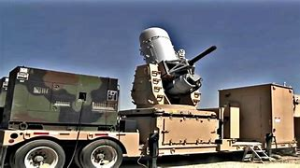
Picture of C-RAM anti-drone system
Jerry Gordon: The US uses a C-RAM system to destroy these drones flying over the Al Assad air base in Iraq.
Stephen Bryen: That’s right, they also have one at the US embassy in Baghdad as well.
Jerry Gordon: That almost looks overkill to use against these cheap Iranian drones.
Stephen Bryen: It is a classic updated old-fashioned solution. It is a rapid- firing six-barrel Gatling gun that shoots 20-millimeter shells, with timers in them so that if they do not hit something, they will explode in the air but not on top of civilians or soldiers. It is based on the Navy CIWS Phalanx rapid fire gun, which is the last resort gun on ships. But it has never succeeded in shooting anything down. That does not stop people from buying it. The C-RAMs have shot down small Katyusha rockets, and drones, so it has done better, However, it amounts to a bird’s eye approach. You just pepper the air with these shells and hope you nail it. It fires over 4000 rounds a minute although its magazine holds far less if you are shooting at such a rapid pace. However, it works particularly if the targets are one or two drones. However, if you have a swarm of drones it is overwhelmed. It cannot manage multiple targets very effectively because it must concentrate on one until it hits it. In the meantime, the others are coming in, so you got that problem.
Jerry Gordon: So that means in the age of artificial intelligence and drone swarms that something like a C-RAM system is not going to be terribly effective?
Stephen Bryen: It has limited and detection capabilities. With these drones, you do not really pick them up until they are on top of you. It is like sitting on the roof of your house and shooting straight up, but even if you do, it is going to fall on your house. It is not the best of solutions, but it is what the US Army has right now.
They also have missiles that they can use, but it is expensive to fire a $50,000 missile at a $20 drone. It is not cost-effective. That is why everyone is looking for other practical solutions, lasers being one of them, jamming is another, nets that we have discussed, even single shot guns that can identify the drone and nail it. However, it is still short range. In fact, there has been even talk about using hawks and other birds to peck at the drone or grab a drone with their talons and fly off. But no, it is not the best solution. High-powered microwave and lasers are most promising.
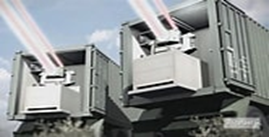
Israeli Iron Beam system
Jerry Gordon: Speaking about the later possible anti-drone solutions, the Israelis have developed something called the Iron Beam, almost sounds like a version of Iron Dome? Is that supposed to be a high energy laser?
Stephen Bryen: Yes, exactly. It uses EMP electric magnetic pulse to fry the electronics of the drone, knock off the explosive and set it off in the air, which in principle is good. However, it has not yet proven that it is efficient. It is certainly cheap because you are using electricity. How efficient it is something that I think needs to be demonstrated. The most efficient is jamming, from the cheapest, to the more sophisticated versions from handheld ones to those that have big antennas mounted on trucks that have greater range and do more. I think the more powerful ones, the Russians have been focusing on. They claim that their system that they put around their air base in Syria, has been effective in stopping even swarming drones. If they are telling the truth. That is a technology that is straight forward, it is well known, there is no special technology. That is something that should be pursued.
The US Army especially is resisting trying to use these kinds of techniques. Look at the Al Assad base in Iraq that was recently hit three days in a row. They did not have jammers. They did not have lasers, other than a missile they used and the C-RAM gun, which they used. They could have done better, but they did not.
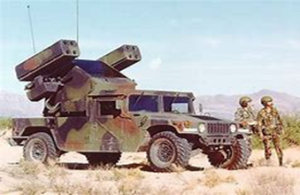
US Army Avenger Stinger Missile System
Jerry Gordon: Speaking about the missile that may have been used in this last attack at the Al-Sad base, was that a Stinger?
Stephen Bryen: It was a stinger, fired from an Avenger chassis that was at the base. because the Pentagon has refused to tell us. They are entitled not to give away all their cards in their deck to the enemy. Not that it would matter, because there is not much they can do about it.
The Avenger system was retired in the ’90s because it’s based on a Humvee chassis. The general assessment was that it would be easy for the enemy to attack the Avenger and destroy it as it was not armored. Not exactly a very pleasant place for a gunner to be sitting right inside. They retired all of them, but kept five or six in the Army, and a similar number in the National Guard for practice. I think starting in 2019, they realize they did not have anything. They were worried about drone threats, not only in the Middle East, but particularly in Europe, coming from the Russians who were becoming drone savvy. They pulled them out of storage updated them and sent them out into the field. At least one has been spotted in Iraq, so, they put them back in service. They have a newer version which is on an armored Bradley Fighting Vehicle chassis, which should be more survivable if attacked. It is expensive technology as one of those missile costs, I think, $50,000 each.
Jerry Gordon: The iron dome interceptors used successfully in the IDF May 2021 Operation Guardian of the Walls against 3,400 rockets and missiles launched Hamas and Palestinian Islamic Jihad cost $60,000 per interceptor used in more than 1,500 instances. Do the math, it is a costly but effective countermeasure, but not against drones.
Stephen Bryen: The Iron Dome is expensive, but they do not want to use it against drones because they know it is too expensive and bad enough to have to use it against these Qassim rockets, they are a cheap junk themselves. They must protect people. However, it is an expensive exercise. Thus, moving toward other solutions like jammers and lasers is sensible if they can be continually improved and made effective. That remain to be seen.
Jerry Gordon: However, those options require significant power especially for the lasers.
Stephen Bryen: That’s right. You must have generators.
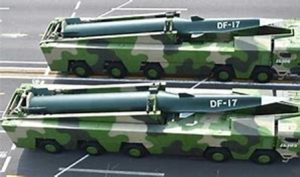
Chinese Mobile “Hypersonic” DF-17 Missiles
Hypersonic Missiles, Solid Fuel Rockets and Nano-technology – the surprising source of know how NASA and Harvard University
Jerry Gordon: Moving right along, Kim Jong-un in North Korea announced the test of an alleged hypersonic missile. How realistic is that for North Korea versus China, Russia, and the US at this point in development of such weapons?
Stephen Bryen: The South Koreans tracked it and said it was not a hypersonic missile, it was just a missile because North Korea were claiming it was able to maneuver. A hypersonic missile has extremely complicated technology, if you want to have a glide vehicle that can maneuver. You can have it without a glide vehicle like the Russian Kinzhal which really cannot maneuver much but goes at hyper speeds. There is no sign that was the case in this North Korean test. Plus, hypersonic missiles, need materials that can withstand heat because these are going fast in the atmosphere, and they are generating a vast amount of heat on their surface, which will deform them. I do not think there is any possibility that the North Koreans have that kind of material.
Jerry Gordon: The other hand China’s version of the hypersonic is a threat.
Stephen Bryen: The Chinese version is a different story. NASA invited Chinese scientists to participate in their ceramics and other materials programs in the 1990s. They obtained all the knowledge they needed if they did not have it already on how to build materials that kind of resist re-entry and that can survive under hypersonic speed conditions. No one ever said anything about that program. This is part of this awful story about how the United States freely gave away its knowledge and technology to potential adversaries.
It is still going on. The leadership in Washington is simply incapable of dealing with this problem, and they have failed to stop it, and gave all of it away. I have been saying for years, we have two defense budgets, one for us and one for them. We have been financing their R&D and what they cannot get directly through the generosity of the Defense Department or other agencies like NASA, they get by stealing it with the cyber-attacks and spying.

Convicted Professor Charles Lieber of Harvard University Nanotechnology expert and China
Jerry Gordon: We had the recent conviction of a Harvard University professor, Charles Lieber, a leading expert in nanotechnology, which is significant sector
Stephen Bryen: Yes, Lieber has not been sentenced. Bill Gertz who is recognized journalist and specialist in defense and intelligence matters published an article recently on how the Chinese are trying to use nanotechnology for mind control of their own soldiers to make them more fearless and to integrate them better with machines in real time from a military point of view. It has civilian uses, which are quite promising in terms of being able to deal with various kinds of the cerebral damage or spinal damage, where people cannot function physically. Now with the use of nano-mesh technology, interfaces can be made between machines and the person so they can think certain things which can then appear legible and understandable to people. Very interestingly, they did this recently in the United States. They evaluated where an impaired person could send tweets, even though he could not talk or type but could think the tweets and could translate them through the interface of a computer and send it out via Twitter.
We have demonstrated that you can do this which was quite exciting, for people with muscular dystrophy and other diseases that are problematic in terms of functionality. This is a very promising technology. Having said that, it is also a dangerous technology in the wrong hands. For that reason, the United States should have controlled it, but it was not. Lieber was convicted, for not following the requirements of his contract with the US government that required him to report any foreign contacts and get approval to co-op especially with China, which he did not do. In fact, half of his staff at Harvard were Chinese. I get the feeling that until the Lieber case, that these things were tolerated all over the place, and nobody paid attention to these contracts or cared one way or another, which is typical of Washington said, “Oh yeah, what the hell?” Few hundred Chinese scientists are not going to make any difference.
Jerry Gordon: It is amazing.
Stephen Bryen: It is a sad story. I am not sure Lieber should be held up as an example by himself. I am not sure whether the culpability is just as much on the US government. I think the US has not performed well here.
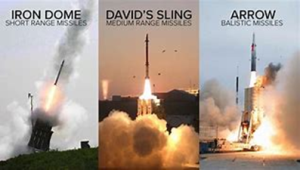
Israeli Tri-level Missile Defense System
Jerry Gordon: What stymies the achievement of an active missile defense system equivalent to what Israel’s tri-level umbrella is all about?
Stephen Bryen: It is political in this country. There is a strong opposition to missile defense and dedicated support for what’s called the MAD – mutually assured destruction doctrine. If we have nuclear ICBMs and they have them, then nobody is going to use them. That was the theory. Now, that was a glancing blow on the chin with the arrival of the rogue states’ capability, like North Korea, Iran, Pakistan even India, which could launch missiles. These missiles could even hit friendly targets like Israel, Western Europe, or even the United States. The whole reason for the ground-based interceptor that we have in Alaska and in California is supposed to prevent an attack by North Korea. If it could launch two missiles, it is not something that is going to cause a lot of grief, but the Chinese can launch hundreds.
Jerry Gordon: You focused on the current standoff between Russia and Ukraine, not only on the geopolitical side, but on technology. You early on indicated the kinds of weaponry that potentially Ukraine has access to counter conventional attacks there. There were two that stood out in mind, one was something we talked about previously, suicide loitering munitions. The other was the use of larger Turkish drones that were used effectively in the brief war between Azerbaijan and Armenia. Then there is a crude Turkish tank protection system that is not as effective as Israel’s world-recognized Trophy System.
Stephen Bryen: Right. I do not know anything about the Turkish version, whether it is good, bad, or indifferent, I have no idea.
Jerry Gordon: Right.
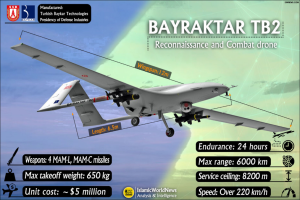
The Impact of Turkish Drones and Israeli Loitering “suicide” Munitions- Nagorno Karabakh, Libya and Ethiopia.
Stephen Bryen: However, I will say that the Turks have developed sophisticated electronics systems. They have partnerships with European companies who have helped them develop their defense electronics capability, and it is quite advanced. It is not trivial. How that translates into an actual product that they are not only deploying but selling is something we do not know yet because it has never been evaluated in real world and in the real-world conditions. I do not know the full answer. However, we do know that their drones work. The Bayraktar was highly effective in the Nagorno-Karabakh conflict. It was also used in Libya, may have been used along the Syrian border, and, in Ethiopia, where it is being used against the Tigray rebels.
It works best when it is integrated with surveillance drones that have the capability to point it to targets, but it can work independently as well. It did a surprisingly respectable job in all these examples. It is a good weapon. It is not so good about killing armor, because the size of the Martel missile that it launches. These are quite small. Unless you get a good lucky hit, they are not going to take out an armored tank, but they can knock out a truck, or a command post. They can do extensive damage. There are videos that the Azerbaijanis made of these missiles striking targets. Now the Russians have jammers, and they have ways of trying to block such things, whether they have them in Eastern Ukraine or not, I do not know, but I would think they must. There is a case where at least one Bayraktar knocked out a howitzer recently in Eastern Ukraine.
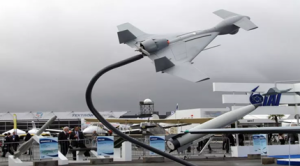
Israel Aircraft Industries loitering munitions “suicide” Harop drone
Jerry Gordon: We’ve talked in the past about the Israeli loitering munitions.
Stephen Bryen: Yes, they have several diverse kinds. The most advanced and sophisticated is called Harop.
Jerry Gordon: Right.
Stephen Bryen: The Harop is a stealthy loitering munition, which means that it is hard to see with radar, and therefore it can orbit around a target and wait for things to develop before it launches.
Jerry Gordon: Does the US have something that sophisticated or not?
Stephen Bryen: We certainly have that type of weapon. However, I do not know if we have anything that is quite like that, but we have weapons with similar capabilities.
Jerry Gordon: Could the Ukrainians get access to the Israeli versions of loitering munitions?
Stephen Bryen: The Israelis have been walking on eggs when it comes to the Ukraine for lots of reasons. First, they need to keep their relationship, not only with the Ukrainians but with the Russians which is of high security importance because of Syria, Iraq, and Iran. I do not think they have supplied anything like Harop to the Ukrainians.
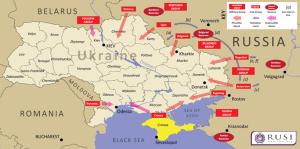
Disposition of Russian Forces surrounding Ukraine
The Russia- Ukraine, US, NATO Standoff
Jerry Gordon: Before we began this discussion, we were talking about what the cost is going to be to Mr. Putin of maintaining this massive Russian force on Ukraine’s borders.
Stephen Bryen: In winter, it is not cheap. That takes massive quantities of fuel and logistics coordination. These are troops that are active anyway. According to The New York Times, Russian forces are deployed on Ukraine on three side including the border with Belarus. So yes, the cost to Russia of their deployments is expensive. The Russians do not seem to have a problem with that so far, at least, they are not saying they do. Putin put himself in a bit of a bad spot, by thinking the idea was to pressure the Ukrainians into negotiating a deal that would cover not only Eastern Ukraine, but also to recognize Crimea, which the Ukrainians are never going to do. Thus, Putin’s moves were beyond reasonable expectations.
Now he is in a trap of his own making. The Ukrainians are not doing anything they are just sitting on their hands. The US is not encouraging them very much to make a deal of any kind, and the US has not proposed any counteroffer. In fact, the US is pushing harder and harder to get them into NATO although European countries are nervous about that. because actions under the NATO treat by the Ukrainians can get them in a war. Because if NATO came to their support, it would impact bases in Poland, and the Baltic States. That is not a healthy place to be these days. I think that it has caused significant consternation.
Jerry Gordon: There was a discussion between Russian Deputy Foreign Minister, one is a Deputy Minister of Defense, and a member of the Biden administration, who we saw previously involve with Ukrainian negotiation, Wendy Sherman. Nothing has emerged from those discussions now, except that the Russians have made it abundantly clear that they want actions against further “NATO encroachment.”
Stephen Bryen: Yes, I think the Russians have put themselves again, in a bad position. Because you cannot guarantee that to them. And you should not. That does not mean you need to put them in NATO. But it is not something you do, not even in secret, because there are no secrets anymore these days. The Russians should have gone in and said, look, “The Ukrainians have to negotiate with us, we need to sit down. This is what we can accept. Well, they have to meet us somewhere in the middle,” and get US to help that process. But it seems like the whole thing is focused on NATO, it is not focused on a deal in the Ukraine, which is crazy.
Jerry Gordon: Correct. Except the wiser course of action would be to cut a deal with Ukraine and put aside, for the moment, the whole question on NATO?
Stephen Bryen: Well, it becomes less urgent if it is not a problem.
Jerry Gordon: Correct.
Stephen Bryen: NATO Secretary General Jens Stoltenberg has been very vociferous about bringing Ukraine in. And they seem to be fixated on that. The truth is that NATO is weak in real terms, if there should be a war, it would involve the United States.
Jerry Gordon: The Biden administration has communicated that the farthest they might go is to issue a new set of sanctions against Russia and Putin.
Stephen Bryen: There are threats and counter threats by the US and Russia, which is to be expected. The Russians signal that they are very pessimistic about these negotiations and do not think anything emerges. Then there would be a stalemate, which has been going since 2014 with the seizure of Crimea and the Donbas region of Eastern Ukraine.
Jerry Gordon: Yes.
Watch this YouTube video discussion with Dr. Stephen Bryen.
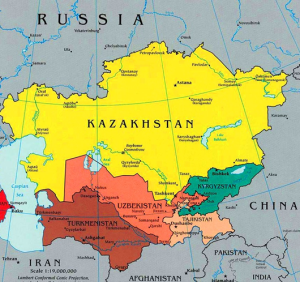
Russia, US Interests in Kazakhstan
Stephen Bryen: Meanwhile, the Russians will step up their efforts to subvert the Ukrainian government through other means and provocations. Look at Kazakhstan, I mean, that seems to be in the same category.
Jerry Gordon: Yes, that is in the same category. I am glad you mentioned that, because that was going to be the next item of discussion. Kazakhstan is an interesting example of what happened after the Soviet Union collapsed in the early ’90s. It became a quasi-prosperous, but autocratic country in the middle of nowhere, with a huge border with Russia. What is it, 7000 miles?
Stephen Bryen: Yes, it is huge.
Jerry Gordon: Russia is in the North. Then there the border with China. The country has considerable mineral wealth from oil, gas, and uranium.
Stephen Bryen: That’s right. It is a mineral rich country.
Jerry Gordon: Exactly.
Stephen Bryen: It is also where the Russians launch space shots from Baikonur.
Jerry Gordon: Correct.
Stephen Bryen: Kazakhstan has strategic importance to Russia from that point of view. The former leader Nursultan Nazarbayev was a dictator. Not so bad, not so good. Murders a reasonable number of people but not too many, that sort of operator. What do you expect to find in that part of the world? But something happened. And now they are saying a little more honestly that there was not a coup attempt. That this whole business was a put-up job by the former head of intelligence, or somebody. I am wondering if it is not even more convoluted, and that the Russians were operating the coup. When the coup started to collapse, they send in troops and said, “We’ll stabilize things and we’ll fix it,”.
Jerry Gordon: Are those Russian paratroopers are going to be permanently deployed there?
Stephen Bryen: I am not sure yet, but it is good chance they will be.
Jerry Gordon: Yes, that is what I perceive as well.
Stephen Bryen: Although, you never know about these things, because they may just train the Kazakh Military, clean out the bad guys and then go home. They can come back anytime they want to, just get on transports, and come back.
Jerry Gordon: Kazakhstan has good relations with the US, I gather, at this point.
Stephen Bryen: Yes, they have for a long time.
Jerry Gordon: That was also true with Israel, as I understand.
Stephen Bryen: Yes, there is a Jewish population there.
Jerry Gordon: That’s correct.
Stephen Bryen: But keeping their heads down.
Jerry Gordon: Was the explosion of protests in Kazakhstan over the spike in gas prices, lack of economic opportunities or against inequality given the autocrats ruling families who profited from the country’s mineral wealth?
Stephen Bryen: The price of LNG was an issue because they use propane to run their cars rather than gasoline because it is cheaper. They raised the price and took away the took off the subsidy. That is when the people went into the streets because they cannot drive their cars trucks, or other equipment. But was it a coup? If so, what was going on exactly? Who was behind it? There was talk about foreign mercenaries. Who were they? If they turn up any, they may have a Russian accent. There is more than meets the eye here. We must wait and see and may never know.
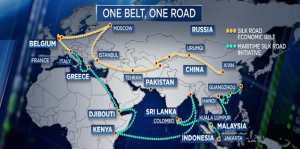
Scope of China’s One Belt, One Road Initiative
The Dangers of China’s One Road, One Belt Projects on Unwary Asian and African Countries.
Jerry Gordon: Next door to Kazakhstan is China. China’s One Road One Belt infrastructure projects spread across central Asia, Persian Gulf now. Israel has used Chinese firms to manage its ports, while the latter made investments in its high-tech economy. China One Road One Belt projects in Africa from the Horn of Africa, and all the way across the Sahel region from the Red Sea to the Gulf of Guinea. So, the question here is, how can the US and its alliance partners deal with this monster?
Stephen Bryen: Don’t give any money to these countries so that they cannot pay their bills, and so that the Chinese find out that they are not going to get paid. Moreover, African, and Asian countries who elected to take on Chinese One Road One Belt projects are already saying, “Let’s renegotiate our loans. We can’t pay it right now.” Right? This could be a big white elephant. If you were a banker, and you went to Guinea, or someplace like that, when you looked at their finances, “I’m not lending you any money. No, you are in debt. How am I ever going to get paid?” The Chinese had stuck their nose way out on very high-risk clients. The high-risk clients are saying, “What do you mean you’re going to take over our port if we don’t pay you? ” This is going to be a mess. I think that the Belt and Road projects may turn out to be worse. It is ambitious, yes. But it also is very risky from a financial point of view. It also risky politically because these countries are going to say, “Hey, wait a minute. These Chinese are screwing us. Let’s screw them.” The Chinese are going to find it very unpleasant. Xi could lose his Communist Party Chairmanship over it because they are going to be exposed to trillions of dollars of defaulted debt before it is over, and they are not going to have income.
Jerry Gordon: That is reflected in the inability that Xi must deal with projects like the bankrupt real estate deal for Evergrande. In the States, you have at least resort to the bankruptcy system, bankruptcy courts.
Stephen Bryen: Right. They do not have that. Their bankruptcy system is they shoot the president of the company, which it not a helpful solution.
Jerry Gordon: One of the lurking dangers for Xi is, much as he would like to be president for life, is the fact that if he really screws up royally, I am sure the Comintern will say, “Time for a change.”
Stephen Bryen: It will unleash competition inside China, for sure. Because somebody must take the rap for it, right? Wherever it is, an African state, or Asian state Xi is holding the bag. At some point, they are going to say, “You have to go.”
Jerry Gordon: Right.
Stephen Bryen: This also raises the question about the Chinese economy because that debt must be underwritten somehow, and the usual way that happens is through inflation, in most normal countries. I do not know how they deal with inflation in China because they rig the currency. It’ will show up anyway, because people will go to the store and find out that they can’t buy the television they want because they aren’t there anymore. They disappeared because they cannot buy the raw materials to make the television. It goes down the supply chain, and soon you end up with paralysis and economic collapse. That is bad for China. It is bad for the world. Because an unstable China is not a good thing.
Jerry Gordon: Yes.
Stephen Bryen: That is where we are heading, but it is moving steadily in that direction. There are very few chances that One Belt and Road clients can pay their bills. Especially with COVID going on, which is making things even worse, because we buy less chocolate or less uranium from African counties, or whatever it is that they are selling to balance their budget, they are not selling. Or at least not as much.
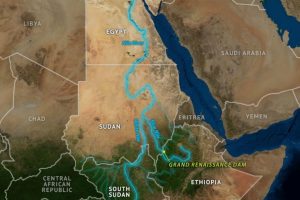
Controversial location of Ethiopia’s Grand Renaissance Dam
Jerry Gordon: The biggest white elephant is the Renaissance Dam in Ethiopia that China had clearly invested hundreds of millions of dollars.
Stephen Bryen: Yes. Better hope the Egyptians do not blow it up. Because they do not like it. It messes up the Nile. It is starting to operate.
At least that is what they claim. I wonder how the Tigray conflict is tied into that. It must be, I think. Where does Tigray get its money? The northern part of Ethiopia is quite poor. Mountainous, and there is no industry there. So where did they get their money? Where did they get their weapons? They may have stolen them from Ethiopian national and regional forces, but they must buy ammunition from outside sources. I hope the United States was not involved, but I would not rule it out. But for sure, the Egyptians have an interest in that, don’t they?
Jerry Gordon: Yes, and to a certain extent, so is the problem in the Sudan next door.
Stephen Bryen: Sudan is a total disaster. That is worse than a basket-case because they kill each other. The Ethiopian dam is a big thorn in the side of the Egyptians, because it could wreck their economy, so they have a strong interest. I think they may be supporting Tigray. Tigray leaders are Marxists. Who would support them, Russians? There is nothing in it for the Russians.
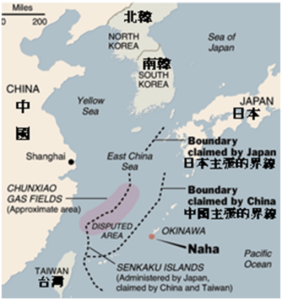
China’s Threats to Invade Taiwan- Rise of US Japan and Australian Deterrent against Invasion
Jerry Gordon: You have written recently about China’s continuing threat to Taiwan, and important developments now between Japan and the US on how to avert an invasion.
Stephen Bryen: There was a two plus two meeting on January 7, 2022, where the Defense Minister and Foreign Minister of Japan conferred with Antony Blinken Secretary of State of the United States, and Lloyd Austin Secretary of Defense. The newly confirmed US Ambassador to Japan also joined the virtual meeting to avoid exposure to COVID by air travel these days.
There was a very promising outcome from the meeting. Overall, both sides agreed to really strengthen their capabilities and confront the Chinese. I was extremely pleased with the outcome, although significant elements were not in the communique where they agree to strengthen their mutual defense capabilities. Not only that, but also to strengthen the defense of the Senkaku islands particularly the Southernmost ones closer to Taiwan, especially Yonaguni, which is less than 67 miles away. There was a previous meeting with Japan’s self-defense forces and PACOM, Pacific Command, on the idea of putting the US Marine and the HIMARS system on Yonaguni, which would give the Marines capability of rocket artillery, against the Chinese invasion attempt in Taiwan. HIMARS is a good system. The only thing that was not decided was setting up a joint command structure.
Jerry Gordon: You have addressed the importance of having something equivalent to NATO Allied Command structure.
Stephen Bryen: That’s right. Because we need to have one in Northeast Asia, if we are going to be able to coordinate with our allies in case there is an attack by the Chinese military. The basic idea in NATO is that you can then coordinate all your forces, logistics coordination, command and control, radars, everything that goes into defending the area and de-conflict the units to avoid friendly fire casualties. The wrinkle in terms of Japan, is that Japan has a constitution, which we put there under General MacArthur which limits the role of their self-defense forces to Japanese territory. If Japan launched an airplane, it could not fly over Taiwan because it is outside of its self-defense airspace limited by its constitution. There is little chance that the constitution is going to change, and I don’t know if we need to change it. We need to have a flexible interpretation which is where we are headed with these joint exercises with the Japanese navy and the air force well beyond Japan’s borders, well outside. I think, the groundwork for that was laid for an up-to-date interpretation of the Japanese Constitution during those bi-lateral meetings and military exercises.
Jerry Gordon: There was a recent bilateral agreement between Australia and Japan?
Stephen Bryen: Yes, the AUKUS Agreement, the UK, US, and the Japanese are now in it. In the communique that came out of the two plus two meeting, not just the US, everybody said, this was a good thing. We are starting to become organized, but it has been a little slow.
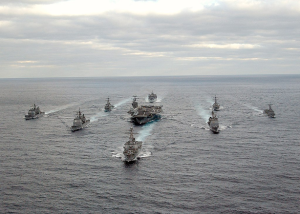
USS George Washington Carrier Battle Group
Jerry Gordon: One of the major assets we have in our military inventory are our Naval carrier task forces deployed across the globe. One of which, the USS Harry Truman was positioned in the Ionian Sea close to monitor the situation in Ukraine and Russia. How many active carrier task force groups, which are not under repair or maintenance, do we have in these global geo-political hot spots?
Stephen Bryen: Usually five, because there is substantial servicing that goes into these carriers that is required to keep them functional. These are huge platforms with 5000 people on them, and upwards of 100 plus jet fighters, helicopters, surveillance aircraft, COD aircraft. So, it is a big operation. The carrier task force is composed of all the ships that go with the carriers from the lowly oilers, the Aegis cruisers, and nuclear submarines. That is a powerful naval force.
Jerry Gordon: How vulnerable are they in a conflict with China?
Stephen Bryen: This is a very hotly debated subject. Since 1996, the Chinese have been trying to set up a situation where they invade Taiwan. I know very well about it as I was one of those demanding Washington move, and I happened to be in Taiwan at the time. We brought two carrier task forces in, and the Chinese backed down. Since that confrontation, the Chinese have made their number one objective to destroy US carriers, and they practice it. We have just seen satellite pictures of a mock carrier on rails in the desert, where the Chinese are practicing shooting at it. They claim they have missiles that can hit US carriers. We have Aegis cruisers, which have been significantly upgraded in recent years with new radars and new missiles – the SM-3 and SM-6 missiles. The US Navy think they can counter any Chinese attacks. It is exceedingly difficult to hit anything at sea from a 500 to 800 miles away. I do not know the Chinese have ever proven they could do that.
We need to bring carriers within 500 miles of the target to make them effective against the Chinese invasion. But that is not our only tool. We have aircraft in Japan and in Okinawa like the F-35s and F18 Super Hornets. We have assets that we can bring to bear. The Chinese may have practiced against the US carrier. But are they going to attack Japan or Okinawa, which they claim? Because if they are the Japanese Defense Forces are free to do anything they want. There is sufficient evidence to believe we have the capability right now to defend our carrier task forces. Not only to defend them, but to use them very effectively against such an attempt by China to take Taiwan or to attack the Japanese Senkaku Islands or Japan itself. We are in decent shape right now. The Chinese are constantly improving their capabilities. They have the DF-21D missile which they call the carrier killer. But sometimes you can over-advertise something.
Jerry Gordon: Does that make the island of Guam a strategic bastion for the United States?
Stephen Bryen: Guam is far away. It is more than 1000 miles from Japan and Taiwan. It is certainly a place we can launch bombers, where we can service and support carriers. It has a port and an exceptionally good airfield. So, it is valuable. However, I think strategically, you must be closer, and Japan is the right place to be.
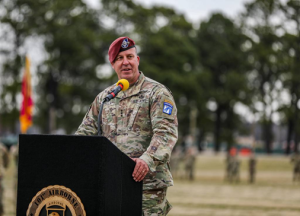
Lt. General Michael “Erik” Kurilla CENTCOM Commander nominee
New US Central Commander with good credentials but problematic White House support
Jerry Gordon: The Biden White House recently announced a change in command of the Central Command.
Stephen Bryen: Yes, they did.
Jerry Gordon: This executive action comes after the debacle with the rout in Afghanistan, the resurgence of Al-Qaeda and the Islamic State. Problems in Syria, and the thinning out of US forces in Iraq. Then you have Iran in its regional campaign with its proxies, whether it is the Houthi in Yemen, Hezbollah in Lebanon, or the Shia Iraqi militias and support of Hamas and the PIJ. What is the geopolitical mission that this reduced central command can credibly perform?
Stephen Bryen: It has fewer and fewer boots on the ground in the Middle East, no doubt about that. This new commander, Lieutenant General Michael “Erik” Kurilla, is coming in at a sensitive time. He is a real fighter, a serious warrior. In Iraq, he was wounded three times and kept on fighting, amazing person. When he assumes command, he will earn his fourth star.
Jerry Gordon: he is currently XVIII Airborne Corps commander.
Stephen Bryen: That’s correct. He is by common consensus the right choice. The last commander of the CENTCOM was not. He proved that in Afghanistan, made a mess. So, General Kurilla has a major challenge on his hands to get this all right. To make it even worse, we pulled out our air defense assets out of the Persian Gulf. I mean, why did we do that? What kind of nonsense. This was part of the Biden Administration misguided concept of pacifying the Iranians and making us flexible in the US, EU-3 nuclear negotiations that are going nowhere. It was an idiotic thing to do, it was reckless. The last CENTCOM commander screwed up in Afghanistan could not say anything. Our new CENTCOM commander must get it right. He must re-organize things.
Right now, the Saudis are out of Patriot Missiles. Those Houthis are launching hundreds of missiles at them all the time, and the Saudis cannot fight back very much longer because it has no missiles batteries. These are things that just must be fixed. We cannot let our troops sitting in places as sitting ducks, which is what we have been doing for far too long in Iraq. We must be proactive, and we can’t let the Iranians get away with in the Middle East. If you want a nuclear agreement with Iran, that is one thing. But when you are talking about taking over the Middle East, that is a different matter. CENTCOM must be the key force to deal with that kind of crisis, and they have not been. I see him as a new coach with a broken team, and he must fix it. That is his job. He is the sort of commander that ought to do that, but he needs top side political support.
He will have to convince General Milley and Secretary Austin who made a mess in Afghanistan. Secretary of State Blinken and President Biden who do not understand the military part of this dilemma and make concessions to the Iranians that are reckless. In the football analogy, General Kurilla has general managers who are not particularly good. He must get them to understand what they need to do without getting fired.
Jerry Gordon: Tough problem.
Stephen Bryen: Good luck.
Jerry Gordon: Israel was moved into the Central Command.
Stephen Bryen: Yes. Israel was moved from EUCOM, the European Command to CENTCOM. That was announced months ago. It was never in CENTCOM in the first place, because the Arabs did not like Israel.
Jerry Gordon: Things have changed?
Stephen Bryen: Things have changed with the Abraham Accord agreements with the UAE, Bahrain, Morocco, and others. Now they want very badly to have Israel in there. From that point of view putting them in CENTCOM was a good thing. Taking them out of EUCOM was not such a good thing because the Europeans need the Israelis in terms of defense capabilities, not that the Israelis are going to go to Europe and fight there. The Israelis are very advanced in terms of technology and war fighting capabilities that would bolster Europe deal to deal with the drone threat that we talked about. That is the perfect example where Israel is well advanced over anybody. I think what the Israelis had figured out is that they can continue their relationships with the NATO while being in CENTCOM, and that is good. That is promising. Good stuff.
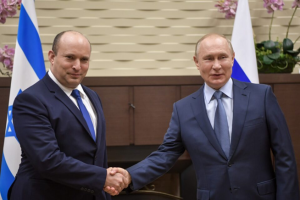
Israel Prime Minister Naftali Bennett with Russia President Vladimir Putin, Moscow, January 13, 2022
Israel’s Important Deconfliction arrangements with Russia and Plan B for Iran
Jerry Gordon: Earlier in this conversation, we mentioned the fact that Israel has a sensitive relationship with the Russians, particularly dealing with matters in Iraq and Syria. Recently, they were attacking Iranian warehouses not far away from the Syrian Port of Tartus. How durable is the Israeli deconfliction agreement with Russia?
Stephen Bryen: Well, it is still there, and it is still functioning. There was a rough bump back in the summer with the Russians, and the Russians were not happy, but that has calmed down, that seems to have gone away, at least for the moment. But it is durable. Look, the Russians need the Israelis, and the Israelis need the Russians. The Russians do not want Iran to run Syria, because then they do not need the Russians anymore. They are not keen on the Iranians staying there, or for that matter, Hezbollah staying there, they want them to go away. “This is our place, we’ve spent a lot to keep Assad in power, we’ve helped to deal with this, and we want to run this show, not Tehran and not Hezbollah. We want to do it ourselves.” They are happy when the Israelis bomb the Hezbollah or the Iranians in Syria
Jerry Gordon: Right. Given what happened in the last Gaza operation in May 2021, Operation Guardian of Walls, particularly, addressing the precision rocket and drone capabilities of Hamas, PIJ, and Hezbollah, how would Israel counter those threats in the case of a conflict with Iran?
Stephen Bryen: They are far less of a threat in the case of the conflict with Iran because they are far away. I do not see the Iranians capable of operating drones all the way to Israel right now. I think they do not have that capability. Instead, they have tried to run drone through proxies in Syria Iraq or Yemen. Those are going to attacked by the Israelis. I do not think there is a strategic drone threat. I think the real fight with the Iranians is going to be their nuclear and missile systems. Iran’s missiles do pose a threat. They are long range, and they are reasonably accurate. They can carry explosives, chemical, biological and nuclear weapons. They are working hard to get to the nuclear weapons. The real issue is whether the Israelis are going to tolerate a nuclear Iran.
Jerry Gordon: Israelis also have their own nuclear ICBM, The Jericho, with EMP capabilities.
Stephen Bryen: Yes, but you do not want to do that. Which brings you to this great question which the Israelis are confronting. I do not know that they know the answer themselves, which is, if Iran gets a nuclear weapon, what do we do? Do we take them out?
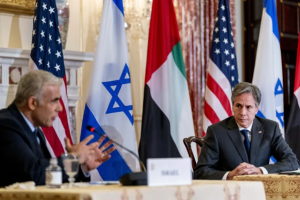
Israel Foreign Minister Yair Lapid and US Secretary of State Antony Blinken
Jerry Gordon: That raises the question about what has been promoted by Israel and to an extent, the US, the so-called plan B in case of the collapse of these discussions in Vienna between the US and the EU3 on revitalization, of the JCPOA Agreement. The question is, how credible is Israel undertaking that mission alone?
Stephen Bryen: It depends on whether in Israel’s assessment that it is an existential threat with which they cannot live. That is not an easy assessment to make. Because it does not just depend on the weapons, it also depends on the politics. I think if Iran is dominated by the revolutionary guards, and its Al-Quds force, the more dangerous things are. I do not think a civilian Iranian leader would be likely to take a risk of using such weapon. However, when you get to the Al-Quds and the Revolutionary Guards in control, you cannot be that certain. I imagine what the Israelis will do is sort of what the United States tried to do, which is to behead Al-Quds, as they did with General Soleimani which made a point. It is one of the things Trump was right about. I think you cannot have just a strategy that says, “Well, we’re going to go and knock off their missiles or knock off their nuclear facilities and that will be the end of it.” No, it does not work that way. You must deal with the political part, and who is in charge. Israel can live with Iran with a civilian leadership, but it cannot live with an Iran with a dangerous military leadership, which is hell bent on destruction of the Jewish nation.
Jerry Gordon: So, your strategy isa more realistic one, cutting off the head of the snake?
Stephen Bryen: Right. I do not know what Israel’s plans are. Policy experts, including my friend, Michael Ledeen, has have talked about how important change is in Iran. I do not think it is regime change about which we are really talking. It is more, like dealing with the troublemakers getting rid of them. The regime will take care of itself, but it is these crazies who are capable of anything. That is dangerous because they oversee the missiles.
Jerry Gordon: The Revolutionary Guards in Iran are the equivalent of what, the Nazi SS during World War II?
Stephen Bryen: Yes, it has that smell.
Jerry Gordon: The elements are similar in that regard.
Jerry Gordon: Yes, so if I were writing a strategy, I would see how I can get to them, deal with them and make their life miserable. That is a more efficient way of addressing the problem, and it might be more acceptable. The problem with the United States too, the United States does not want to attack Iran. No administration, not just the Democrats, want to do that, Bush did not want to do it. Trump did not want to do it. It is the same old story. It was not that we would lose, it is just that what will we gain?
Jerry Gordon: Certainly, sanctions against the leadership of IRGC and the Quds force has not proven anything.
Stephen Bryen: No, those do not work. Those were adopted just so you look like you are doing something.
Jerry Gordon: What you are really talking about is covert warfare?
Stephen Bryen: I did not say covert, I did not say overt. I did not say what it would be because I do not know. I think that if you were concerned about the threat and you wanted to reduce the threat profile, which is where you go looking. How you do it is another story. I am not head of the Mossad or head the Israeli Defense Forces, or for that matter, the head of CENTCOM. I think, that is where you sit down, figure out what you may be able to do with additional assets, where you can compromise these people and put them out of business.
Jerry Gordon: Stephen, I want to thank you for another brilliant tour de force canvassing geopolitical and technology activities associated with threats around the globe.
Stephen Bryen: We live in uncertain times, no doubt about that.
Jerry Gordon: Yes.
Stephen Bryen: I do not know it was brilliant, but I missed asking questions. Jerry, thank you very much for having me. It was enjoyable.
Jerry Gordon: Thanks very much. Please send our regards to Shoshana
Stephen Bryen: I will. Take care.
Watch the YouTube video of this discussion with Dr. Stephen Bryen.
______________
Jerry Gordon is a Senior Editor of The New English Review, author of The West Speaks, NERPress, 2012 and co-author of Jihad in Sudan: Caliphate Threatens Africa and the World, JAD Press, 2017. From 2016 to 2020, he was producer and co-host of Israel News Talk Radio-Beyond the Matrix.
Follow NER on Twitter @NERIconoclast







